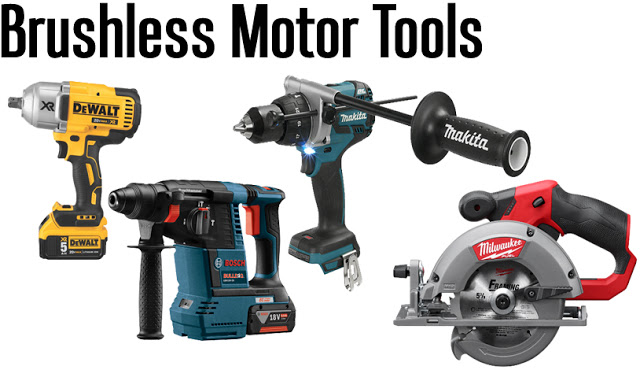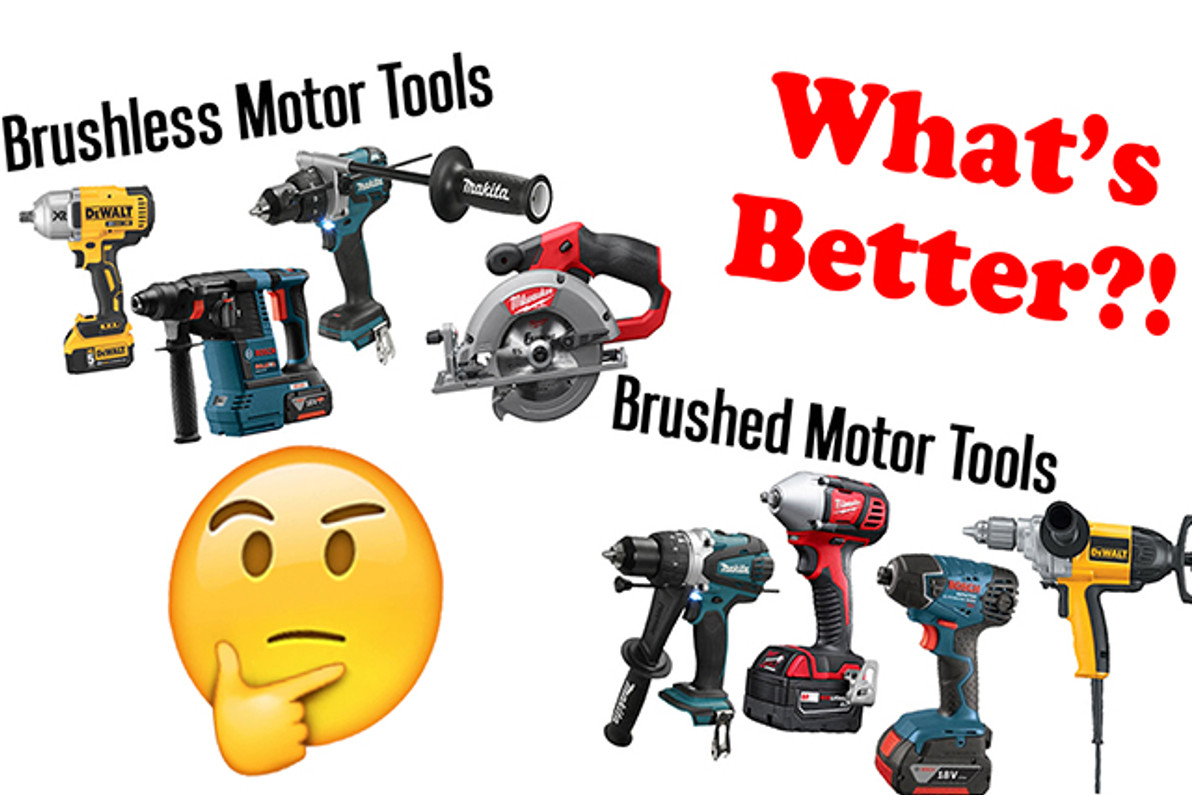Difference Between Brushed & Brushless Motors
Brushed or brushless? Which one is better? You've probably noticed that tools with brushless DC motors are higher in price than brushed. Does that mean their performance is higher? Whether it's brushed or brushless, these motors are both rotating because of the same thing: magnets. Just like putting two same sides of a magnet together (N & N or S & S), they push away. This is the same force that keeps the motor shaft continuously rotating.
Brushed Motors

In a brushed motor, electricity (whether it's corded or cordless) comes through two spring-loaded carbon brushes
located on each side of the motor's shaft (the spring keeps the
physical contact between the brushes and the commutator). The brushes
come into contact with the commutator, a part of the motors that
is fixed to the motor shaft. The commutator then transfers that electric
current to the armature which is also attached to the motor shaft. The armature is
made up of tightly wrapped bundles of copper wiring which the
electricity travels through, creating an electromagnetic field. Fixed
magnets are located outside of the motor that spin the motor when the
armature becomes electromagnetically charged. It will continue spinning
until the charge from the battery stops.
Pros of the brushed motor are that it's a simple structure and it's lower in price.
A con of the brushed motor is that the brushes are in physical
contact with the commutator. This results in friction (causing a loss of
energy) and wear and tear. Brushes require replacing after a period of time.
Brushless Motors

Brushless motors
are not a marketing scheme, there is a legitimate physical difference
in structure and operation of the tool. In a brushless motor, the
positions of the armature and the magnets are switched. The armature is
fixed outside the motor and the magnets are on the rotor part of the of
the motor. There is no commutator and NO carbon brushes (brushless). You
might now be wondering, how does the electric current travel without
the brushes? WELL...
The brushless motor features a very small circuit board that regulates the power traveling to the armature (this is why brushless is a little pricier than brushed). There is a sensor that
detects the motion of the rotor and when the circuit board distributes
electric current to the armature, the same electromagnetic field is born
and voila, the motor shafts starts spinning!
The sensor in a brushless motor also benefits the user by maintaining a
power supply adapted to the application at hand (often brushless tools
are called "smarter" tools). The more resistance the object that is
being worked on has, the more electric current will be released because
of the sensor. Brushed consistently only run on its maximum speed when
in use.
Pros & Cons
Pros of brushless motors are that it has little-to-no friction,
making it more efficient, therefore a battery and run time will last
longer. Brushless motors are also lower maintenance because they don't
have carbon brushes.
The con of the brushless motor is the increase in cost compared to brushed motor tools.
Fun factoid: the brushless electric motor was first introduced by Makita!
Thanks for checking out our blog and make sure to take advantage of our March Madness sale!
Each week of March, new items are marked down DRASTICALLY. Once the
week is over, that sale is GONE. No rainchecks. Have a great day!
Recent Posts
-
Bissett is Universally Compatible, See Why and How
With Bissett's over 600 fasteners, you're bound to find the perfect fastener for your tool. You …2021 Mar 16th -
How To Choose Safety Gloves
We love healthy hands at Edmonton Fasteners. We’re not a skincare shop (clearly) but we d …2021 Mar 8th -
Three Easy Home Fixes with Gorilla Glue
Gorilla Glue is a household name because of one reason: it works. We carry Gorilla Glue at Edmo …2021 Feb 2nd





